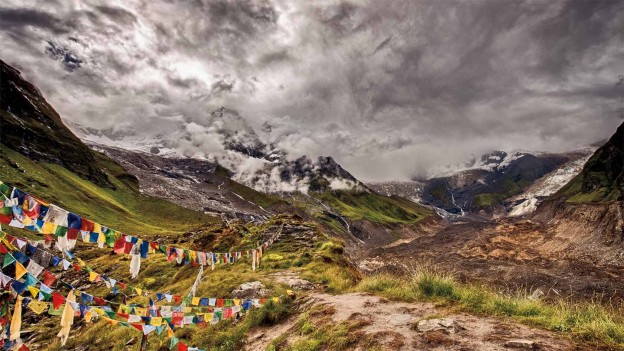- Abstract
- Background and Historical Context
- Significance
- Core Challenges
- Discussion Questions
- Additional Readings and Resources
- In discussing deforestation, can we find a better balance between protecting the environment and providing poor, rural Nepali people with access to fuel?
- Poor, rural Nepali people often subject themselves to unsafe cooking practices in order to save money on biofuels. How does this dynamic reflect the structural violence inherent within Nepal?
- Monsoon season is an annual occurrence, however in recent years, the season has become erratic and unpredictable. What do you think Nepali people could do to better prepare themselves for potential problems caused by irregular and intense monsoon rains?
- How do we respect the culture and the economic motivations of Nepalis who live near glacier lakes, while protecting them from GLOFs?
- How do we engage the global community to care about GLOFs when geographically, they affect so few communities and people?
Abstract
On April 25, 2015, a 7.8 magnitude earthquake struck Nepal, destroying villages and devastating the land. Water–its uses and effects–is a recurrent theme in post-earthquake Nepal. Deforestation has prevented water absorption and land anchoring by tree roots, thus contributing to landslides and flooding. However, Nepalis are dependent upon using wood for fuel, causing this destructive practice to continue. Monsoon season, which began in June, has compounded the difficulties in post-earthquake Nepal by also contributing to landslides and flooding. These effects have caused food insecurity, which has implications on the health and livelihood of Nepalis. Earthquakes and climate change have made glacial lakes more susceptible to Glacial Lake Outburst Floods (GLOFs), which obliterate villages and infrastructure downstream. Unfortunately, many Nepalis live near these glaciers because of their economic benefits and cultural significance. Nepal’s terrain makes reaching affected, rural areas with disaster relief extremely difficult. Therefore, interventions are most successful when they have a strong coalition of workers who understand the complicated, multifaceted factors that complicate Nepal’s relationship with water and the environment. Deforestation, monsoons and GLOFs existed before, but were exacerbated by the 2015 earthquake, creating an even more tenuous human-environment relationship in Nepal. Fortunately, Nepalis have shown true resilience by actively participating in improving these issues through Nepal-based organizations, policies, and initiatives such as Kathmandu Living Labs, community forestry and community-based GLOF risk-reduction.

Background and Historical Context
Nepal has a unique landscape, situated in the Himalayan mountain region, surrounded by hills and the terai or flatland. In Nepalese culture, the landscape is experienced along economic, cultural and spiritual dimensions. The nepalis have embraced tourism and agriculture for their economic benefits, but they remain primarily a poor people. Many Nepalis use wood from their forests as fuel because it is the most economic option. In an effort to conserve these important forest resources, the government of Nepal instituted Community Forestry in 1957, as a regulatory action. Nonetheless, deforestation has continued, increasing the likelihood of landslides. Monsoons are important for irrigation, agriculture and food security. However, climate change has caused erratic monsoon seasons, damaging and delaying the harvests of many Nepali farmers. Similarly, Glacial Lake Outburst Floodings, increasing under climate change, have impacted Nepali livelihood and agriculture. Underscoring the importance of environment to Nepal is the cultural and spiritual significance of the environment. A core belief in Hinduism is that “nature cannot be destroyed without humanity destroying itself,” in that treatment of nature directly impacts a person’s karma (BBC.com, Huffingtonpost.com). Deforestation, Monsoons and GLOFs are environmental issues that have continually plagued Nepal. However, the effects of climate change and the 2015 earthquake are quickly deteriorating an already susceptible landscape.

Significance
Nepal is known for its beautiful setting, spectacular mountain landscape and idyllic representation of traditional rural life, but this image is misleading. The rural populations of Nepal are impoverished despite the country’s revenues from tourism and foreign aid. The land is essentially the only resource over which they have control. However, environmental issues and climate change, as well as the recent 2015 earthquakes, are jeopardizing this control. Furthermore, the changing and destruction of the environment due to deforestation, monsoons, and Glacial Lake Outburst Floods are also posing global health problems in post-earthquake Nepal, by making it difficult for aid to be delivered. A better understanding of the influences that contribute to environmental issues in Nepal, and possible interventions to combat these issues to improve the livelihood of Nepalis, may provide insights into how similar issues in other countries can be addressed.
Core Challenges (click to explore individual pages)
Discussion Questions
Additional Readings and Resources
Deforestation
Monsoons
GLOFs

